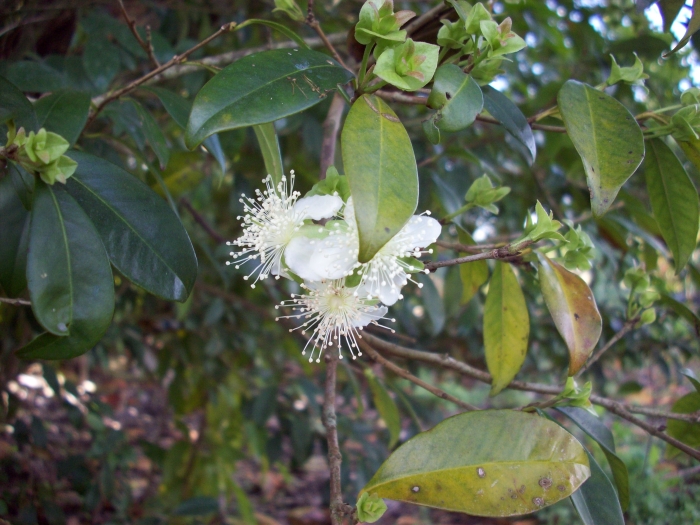Pitomba
(Eugenia luschnathiana)
Pitomba (Eugenia luschnathiana)
/
/

I likE plants!
CC BY 2.0
Image By:
I likE plants!
Recorded By:
Copyright:
CC BY 2.0
Copyright Notice:
Photo by: I likE plants! | License Type: CC BY 2.0 | License URL: https://creativecommons.org/licenses/by/2.0 | Uploader: VortBot | Publisher: Wikimedia Commons | Title: RFVC_009.jpg | Notes: |









Estimated Native Range
Summary
Eugenia luschnathiana, commonly known as Pitomba, is an evergreen shrub or small tree native to the Atlantic Forest biome of Northeastern Brazil, particularly thriving in forest clearings and edges. It typically grows to a height of 4–10 meters. The leaves are opposite, 3–7 cm long, oblong-lanceolate, dark green above, pale below, with a short petiole and a leathery texture. The flowers, which appear in spring, are 1.5–2 cm in diameter with four (rarely five) yellowish-white petals and are not particularly showy. The fruit is a globose, bright orange-yellow berry 2.5–5 cm long, containing one or two (rarely up to four) 1 cm diameter seeds.
The Pitomba is valued for its edible fruit, which has a thin, tender skin, and a soft, juicy, golden-yellow pulp that is aromatic, slightly acidic, and faintly resinous in flavor. The fruit is often used in jellies, preserves, and carbonated beverages. In cultivation, it is grown as an ornamental plant for its attractive foliage and fruit, and it is also planted in home gardens for its edible berries. Pitomba thrives in full sun and requires medium amounts of water and well-drained soils. It is frost-sensitive, tolerating temperatures only down to about −1 °C. While it is not widely cultivated outside its native range, it can be grown in subtropical regions with appropriate care.CC BY-SA 4.0
The Pitomba is valued for its edible fruit, which has a thin, tender skin, and a soft, juicy, golden-yellow pulp that is aromatic, slightly acidic, and faintly resinous in flavor. The fruit is often used in jellies, preserves, and carbonated beverages. In cultivation, it is grown as an ornamental plant for its attractive foliage and fruit, and it is also planted in home gardens for its edible berries. Pitomba thrives in full sun and requires medium amounts of water and well-drained soils. It is frost-sensitive, tolerating temperatures only down to about −1 °C. While it is not widely cultivated outside its native range, it can be grown in subtropical regions with appropriate care.CC BY-SA 4.0
Plant Description
- Plant Type: Shrub
- Height: 20-25 feet
- Width: 10-15 feet
- Growth Rate: Moderate
- Flower Color: White
- Flowering Season: Spring, Summer
- Leaf Retention: Evergreen
Growth Requirements
- Sun: Full Sun, Part Shade
- Water: Medium
- Drainage: Medium
Common Uses
Bee Garden, Bird Garden, Butterfly Garden, Edible*Disclaimer: Easyscape's listed plant edibility is for informational use. Always verify the safety and proper identification of any plant before consumption., Fragrant, Low Maintenance
Natural Habitat
Native to the Atlantic Forest biome of Northeastern Brazil, particularly thriving in forest clearings and edges
Other Names
Common Names: Uvalha Do Campo
Scientific Names: Eugenia luschnathiana , Eugenia lucescens , Eugenia duckeana , Phyllocalyx luschnathianus
GBIF Accepted Name: Eugenia luschnathiana (O.Berg) Klotzsch ex B.D.Jacks.